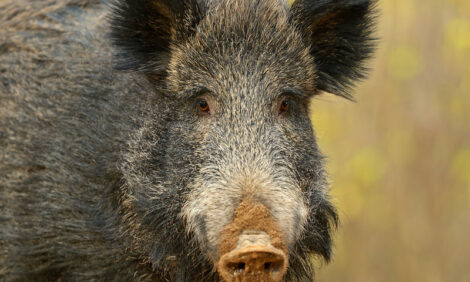



Market Preview: No Gain Without Some Pain
US - Weekly US Market Preview provided by Steve R. Meyer, Ph.D., Paragon Economics, Inc.I had the honor once again to speak to the annual National Pork Industry Conference at the Lake of the Ozarks in Missouri last week. The event was, given the economic conditions of the pork industry, surprisingly well attended. The mood was somber, but not what I would call depressed, even though everyone was obviously growing weary of the continuing economic challenges.
I began my talk with the old joke about the guy who walks into the doctor and says, "Doc, it hurts when I do this," and then moves his arm up and down. The doctor, of course, responds with an emphatic "Then stop doing that!"
The metaphor for the pork industry is obvious: If the economic outcomes of our businesses are to change, we have to not do what we’ve been doing.
Factors Impacting Pork Prices
Now some of what we have been doing is really not our fault. The H1N1 Flu Outbreak Virus forced "us" to sell a lot more pork on the US market. Without that extra supply, things would have been different this summer.
Another "problem" of what we have been doing is the paradoxical impact of improving efficiency. Becoming more productive is what the American farmer is all about, right? But the surge in productivity – especially litter size – in the past two years has completely confounded any output rationalization efforts that we have seen. It appears that the sow reductions to date have simply been the removal of the “circovirus compensating” sows that were in place to keep pig flows reasonable in the face of large death and morbidity losses.
An aside on this topic: I have mentioned several times that we heard several anecdotal reports of a surge in sow productivity after the introduction of circovirus vaccines. That surge appears in the data as we compared the production from vaccinated sows in 2008 to that of unvaccinated sows in 2007.
That impact should have been over when we began comparing 2009 data to that from the vaccinated sows in 2008, right? But it has not ended, and one well-known veterinarian explained to me that a reason is the impact that circovirus suppression is having on the immune systems of vaccinated animals. We have not only eliminated circovirus, but we have enabled the animals to fight other pathogens more effectively, thus raising their health level another notch and providing this added surge of productivity.
I doubt that that impact can continue forever, but it certainly is not waning yet and provides a huge challenge: If we are to reduce output to drive prices up, we must reduce the sow herd by a larger per centage than productivity growth. And we haven’t done that yet.
My "it hurts when I do this" schtick reminds me of another famous (at least in Oklahoma) comedy routine by Archie Campbell on the old Hee-Haw television show. Archie would weave stories that had some good happening, to which Roy Clark or some other accomplice would say, "That’s good" and Archie would respond "No, that’s bad!" He would then describe some awful happening to which Roy would say. "Oh, that’s bad!" Archie, of course, would reply with "No, that’s good!" And on and on they would go. It was great fun.
Lower Feed Prices Are Good – and Bad
I feel that way – without the fun part – about the recent drop in corn and soybean meal prices and the surge we have seen in cutout values over the past two weeks. While the latter has yet to translate into higher hog prices – and that may take awhile given the fact that the cutout and hog prices have been upside down for much of this year (see Figures 1 and 2) – the profit picture improved markedly from mid-June to last week, and then declined sharply as Lean Hog futures fell to contract life lows for most contracts on Monday morning.


Figures 3 and 4 show my forecasts through July 2010 as of 21 June and then again today. Note that the projected losses through year’s end and through July 2010 are both smaller now than they were in June. But they are over $3/cwt larger than they were just one week ago.


So – the drop in feed prices is good because it means producers are losing less. That’s good. No, that’s bad – because we still need to reduce the sow herd enough to offset productivity gains and reduce supplies and that will not happen with less economic pain. So – the drop in Lean Hog futures this past week is bad because it hurts producers’ profits prospects and adds to their financial stress. No, that’s good – since it increases incentives to reduce the sow herd and will lead to higher long-term profit levels.
I could go on, but you get the drift. Economics is all about incentives and the incentives for output changes are shifting weekly and, in some instances, daily. I still believe we need to produce less to bring some semblance of consistent profits that are large enough to compensate producers for the risks they take. Unfortunately, it will take economic pain to get that done.










